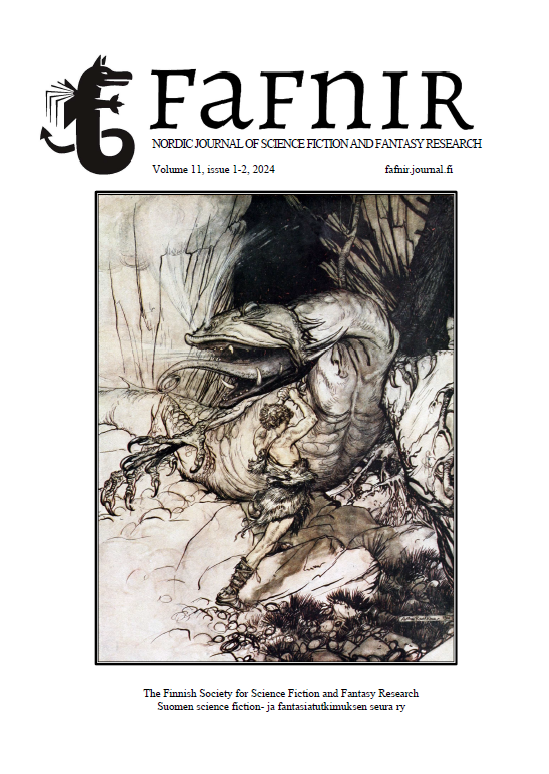Ice and Ecotrauma in Isaac Asimov’s “The Martian Way”
Keywords:
ice, ecotrauma, space mining, anthropogenic change, environmental ethics, matter, science fictionAbstract
This article examines Isaac Asimov’s novella “The Martian Way” (1952) as a work that exposes the entanglements of the trauma of the environment with the ecological trauma of the humans. The narrative re-envisions the Cold War energy crisis for a future era and visualizes the pursuit of hydropower as the appropriation of one of the ice fragments of Saturn’s rings. In doing so, it problematizes space mining and the traumatization of the environment. I examine the infliction of varied forms of violence on ice in “The Martian Way” and underscore human blindness to nonliving or inorganic matter. This analysis of the novella also focuses on how human characters suffer the consequences of their own violence on the environment they transform. Mobilizing the concept of ecotrauma, I demonstrate that the ice in “The Martian’s Way” agentially responds to anthropogenic violence. This article contributes to ecocritical discussions on the ethical mattering of inorganic matter such as water. My analysis encourages thinking beyond a singular species and necessitates a critical environmental perspective that includes nonliving entities within the domain of ethical mattering and thus moves beyond life-centered environmental worldviews.
Downloads
Published
Issue
Section
License
Copyright (c) 2024 Faeze Rezaii

This work is licensed under a Creative Commons Attribution-NonCommercial 3.0 Unported License.
Content in Fafnir is licensed under Creative Commons Attribution-Non Commercial 3.0 Unported License (CC BY-NC 3.0).
Beginning in November 2019, authors retain full copyright without restrictions. By publishing with Fafnir, authors grant a non-exclusive license to Fafnir to distribute the publisher’s version of the work, and give Fafnir permission to grant reprint and/or translation requests in accordance with our open-access policy and our Creative Commons license.
Prior to November 2019, copyright for all published material is held by Fafnir, but authors have full permission to use their work as they wish (i.e., self-archiving, reprint requests, using for other projects, etc.).
In both cases, re-use or re-posting of material published in Fafnir must acknowledge original publication and include a link to the publisher version.


